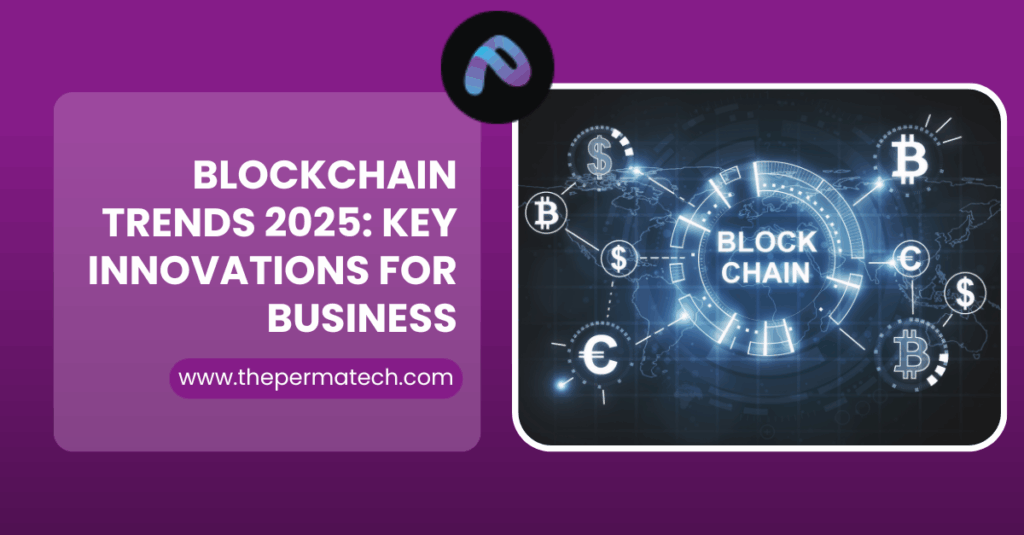In 2025, blockchain has matured beyond cryptocurrency. Enterprises now see it as a core digital infrastructure, enabling trusted data, automation, and transparent transactions. From asset tokenization to decentralized AI training, blockchain development services are entering a transformative era powered by faster consensus mechanisms, cross chain interoperability, and secure smart contract auditing.
Latest Blockchain Tech Stack for 2025
| Layer | Core Technologies & Tools (2025) | Purpose / Example Use |
| Smart Contract Layer | Solidity, Rust, Move, Vyper, Cairo | Used for Ethereum, Solana, Aptos, and StarkNet development |
| Blockchain Frameworks | Hyperledger Fabric, Substrate, Cosmos SDK, Avalanche Subnets, Polygon CDK | Building modular and customizable blockchains |
| Interoperability Layer | LayerZero, Chainlink CCIP, Polkadot Bridges, Cosmos IBC | Enabling cross-chain asset and data transfer |
| Storage & Data Layer | IPFS, Arweave, Ceramic, Filecoin | Decentralized storage for dApps and NFT ecosystems |
| Frontend & Integration | React, Next.js, Web3.js, Ethers.js, Wagmi, RainbowKit | Frontend frameworks and wallet integrations |
| Backend & Infra | Node.js, Go, Python (FastAPI), NestJS | Server-side logic and blockchain orchestration |
| DevOps & Monitoring | Docker, Kubernetes, The Graph, Tenderly, Alchemy Monitor | Continuous deployment, analytics, and observability |
2025 Blockchain Development Trends
🔹 Modular & App Specific Blockchains
The rise of Cosmos SDK, Avalanche Subnets and Polygon CDK allows organizations to build domain specific blockchains.
→ Enterprises can launch faster and optimize for scalability without starting from scratch.
🔹 Blockchain + AI Convergence
AI systems are using blockchain for model provenance, training transparency, and synthetic data validation.
By 2025, over 35% of AI startups integrate blockchain-based auditing (Gartner).
🔹 Asset Tokenization Goes Mainstream
Tokenization of real world assets (RWA) from real estate to carbon credits is now a $3 trillion market opportunity (Boston Consulting Group, 2025).
Banks and governments are experimenting with regulated DeFi and CBDCs.
🔹 Zero Knowledge (ZK) Proof Systems
ZK tech like zk-SNARKs, zk-STARKs and zk-EVMs dominate the privacy and scalability conversation.
Projects like StarkNet and zkSync Era are leading production deployments.
🔹 Sustainable & Green Blockchains
As ESG compliance tightens, energy efficient networks such as Algorand, Cardano and Hedera gain traction.
The average energy per transaction dropped 70% since 2022 due to proof of stake adoption.
🔹 Cross Industry Smart Contracts
Industries like logistics, insurance and digital identity use blockchain for traceability and automated compliance.
Example: Walmart, Maersk and FedEx use blockchain for real time freight visibility.
Analytical Data (2025 Market Overview)
| Sector | Blockchain Adoption (%) | Primary Use Case | Key Platforms |
| Finance | 79% | DeFi, Tokenization, CBDC Pilots | Ethereum, Polygon, Solana |
| Supply Chain | 62% | Traceability & Provenance | VeChain, Hyperledger, IBM Food Trust |
| Healthcare | 48% | Patient Data Security | Hyperledger Fabric, Avalanche |
| Energy | 41% | Carbon Credits & Grid Tokenization | Energy Web Chain |
| Gaming & NFTs | 68% | Asset Ownership & Royalties | Immutable X, Flow, Polygon |
Enterprise Blockchain Outlook for 2025
- Enterprise spend on blockchain integration exceeds $54 billion (IDC, 2025).
- Web3 workforce up 43% YoY, with demand for smart contract auditors and blockchain architects.
- Security audits become mandatory: over 60% of enterprises employ automated code review tools (e.g., Slither, MythX, and CertiK).
Conclusion
Blockchain development in 2025 isn’t just about decentralized apps , it’s about building digital trust frameworks across industries.
With evolving tech stacks, AI integrated workflows and real world asset tokenization, organizations that invest early in scalable blockchain infrastructure will define the next generation of secure, decentralized digital economies.




